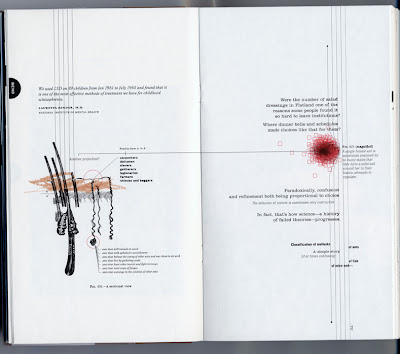I’ve been working on my spring 2008 course, “Literature and Mathematics” lately, and one of the things I’m trying to do is update the course website so it is a little more aesthetically pleasing. I started with a splash image:
The inspiration for the image is the quote from Lakoff and Núñez’s Where Mathematics Comes From:
The inferior parietal cortex is a highly associative area, located anatomically where neural connections from vision, audition, and touch come together—a location appropriate for numerical abilities, since they are common to all sensory modalities. Lesions in this area have been shown to affect not only arithmetic but also writing.
I felt the connection between arithmetic and writing emphasized in the quote would be a good hook for the course, a way of building on Lakoff and Núñez’s argument that mathematics is about ideas, then connecting this claim to literary ideas and the way the two interact.
My inspiration for the aesthetic of the image is another course text, Tomasula and Farrell’s Vas: An Opera in Flatland. Here’s a sample page from that text:
Although I’m going to make some minor tweaks to the image—I don’t like the look of the line to the bullseye, for example—I’m pretty pleased with the results.
There is one thing I’m not sure how to handle, though. The image of the brain comes from Joseph Vimont’s Traité de phrénologie humaine et comparée the NIH’s “Historical Anatomies on the Web.” The bullseye is supposed to be centered on the angular gyrus in the inferior parietal cortex. While I think the positioning seems about right, I don’t think that the brain folds in Vimont’s image match up with the folds of other brain images I have seen. Based on the folds, I think the angular gyrus would be located just to the right of the middle of the image. I’m not sure if this is because Vimont’s image is incorrect, or if it is not a view from the left side, but from the left rear of the brain. I suppose it’s not a big deal, because this isn’t a neurology course.
No comments:
Post a Comment